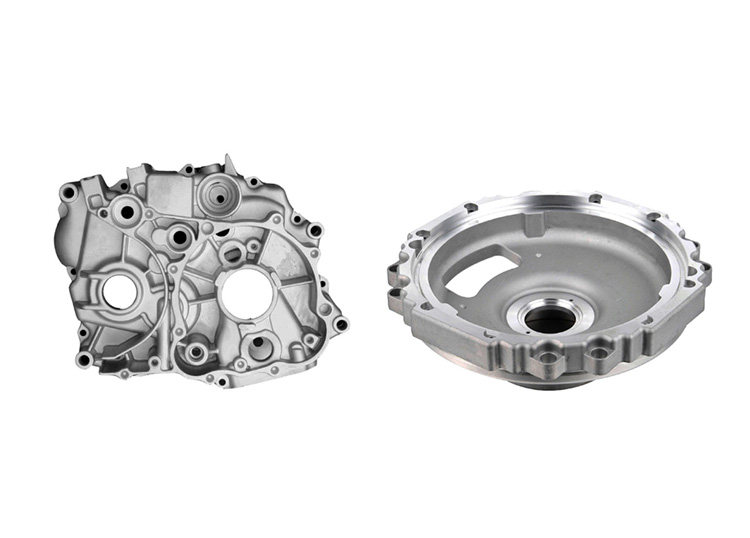Little Known Facts About Stahl Specialty Company.
Table of ContentsAbout Stahl Specialty Company7 Simple Techniques For Stahl Specialty CompanyFacts About Stahl Specialty Company UncoveredThe Stahl Specialty Company DiariesThe Ultimate Guide To Stahl Specialty Company
The subtle difference depends on the chemical material. Chemical Comparison of Cast Light weight aluminum Alloys Silicon promotes castability by lowering the alloy's melting temperature level and enhancing fluidity during casting. It plays an essential function in enabling intricate mold and mildews to be filled accurately. In addition, silicon adds to the alloy's toughness and use resistance, making it beneficial in applications where toughness is essential, such as automobile parts and engine parts.It likewise improves the machinability of the alloy, making it easier to process right into completed items. In this way, iron contributes to the total workability of aluminum alloys.
Manganese adds to the toughness of aluminum alloys and improves workability. It is commonly made use of in wrought aluminum items like sheets, extrusions, and accounts. The visibility of manganese aids in the alloy's formability and resistance to splitting throughout fabrication procedures. Magnesium is a lightweight element that offers stamina and effect resistance to light weight aluminum alloys.
Zinc boosts the castability of light weight aluminum alloys and aids manage the solidification process throughout casting. It improves the alloy's toughness and solidity.
The Single Strategy To Use For Stahl Specialty Company
Because aluminum-silicon alloys have great casting residential properties, high gas buildings, basic procedures, and exceptional corrosion resistance, aluminum-silicon alloys are most frequently used in the die-casting industry in the house and abroad. At the same time, aluminum-silicon alloys are also fairly early and widely acknowledged alloys created and used in die-casting. After continuous study and improvement, many of the current global mainstream aluminum-silicon alloys have been wrapped up and are absolutely nothing more than A356, A360, A380, ADC12, B390, and A413.
The main thermal conductivity, tensile toughness, yield strength, and elongation differ. Amongst the above alloys, A356 has the highest possible thermal conductivity, and A380 and ADC12 have the lowest.

Stahl Specialty Company Things To Know Before You Get This
In accuracy spreading, 6063 is well-suited for applications where intricate geometries and top notch surface area coatings are critical. Examples include telecommunication units, where the alloy's exceptional formability permits streamlined and aesthetically pleasing layouts while keeping structural honesty. Likewise, in the Illumination Solutions sector, precision-cast 6063 elements produce stylish and efficient lighting components that call for intricate forms and click over here now good thermal efficiency.
(https://www.indiegogo.com/individuals/38493226)
It results in a better surface finish and much better deterioration resistance in A360. The A360 shows exceptional prolongation, making it optimal for facility and thin-walled elements. In accuracy casting applications, A360 is appropriate for industries such as Customer Electronics, Telecommunication, and Power Devices. Foundry. Its boosted fluidness permits intricate, high-precision elements like smart device casings and interaction device real estates.

In precision casting, light weight aluminum 413 radiates in the Customer Electronics and Power Devices industries. It's generally used to craft intricate parts like mobile phone housings, cam bodies, and power tool cases. Its precision is remarkable, with tight tolerances approximately 0.01 mm, making certain flawless product assembly. This alloy's superior deterioration resistance makes it a superb selection for exterior applications, ensuring resilient, resilient products in the mentioned industries.
Stahl Specialty Company Can Be Fun For Everyone
The light weight aluminum alloy you choose will considerably impact both the spreading procedure and the residential or commercial properties of the last product. Because of this, you need to make your choice very carefully and take an informed strategy.
Figuring out the most appropriate light weight aluminum alloy for your application will certainly mean weighing a vast variety of features. The first group addresses alloy features that influence the manufacturing procedure.
The alloy you pick for die casting directly influences numerous aspects of the spreading procedure, like exactly how easy the alloy is to work with and if it is prone to casting flaws. Hot breaking, also referred to as solidification cracking, is a typical die spreading issue for light weight aluminum alloys that can result in interior or surface-level rips or splits.
The 10-Minute Rule for Stahl Specialty Company
Particular aluminum alloys are more vulnerable to hot cracking than others, and your choice needs to consider this. An additional usual flaw located in the die spreading of light weight aluminum is die soldering, which is when the actors sticks to the die walls and makes ejection hard. It can damage both the actors and the die, so you must look for alloys with high anti-soldering properties.
Deterioration resistance, which is already a remarkable characteristic of aluminum, can differ substantially from alloy to alloy and is a crucial characteristic to consider relying on the environmental problems your product will certainly be revealed to. Use resistance is another property frequently looked for in aluminum items and can distinguish some alloys.